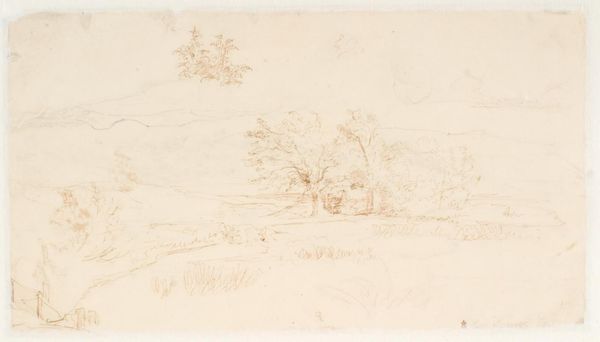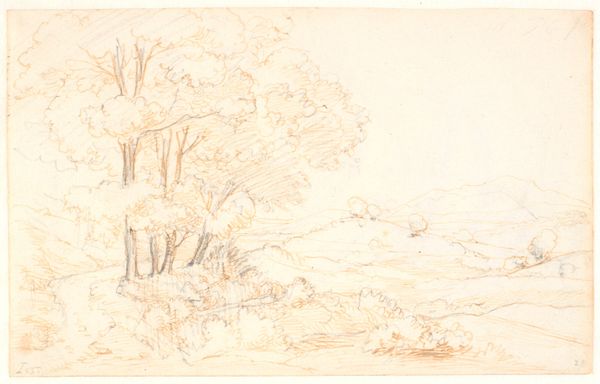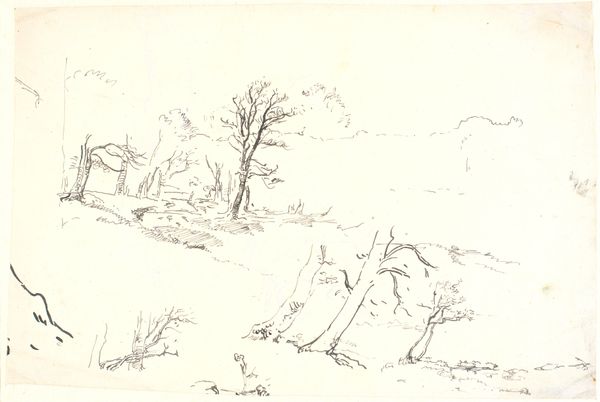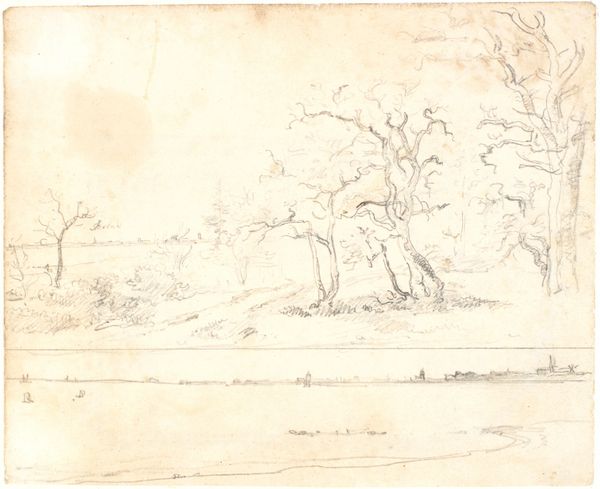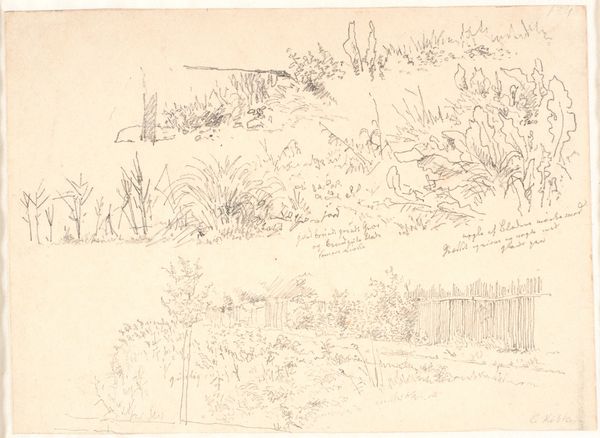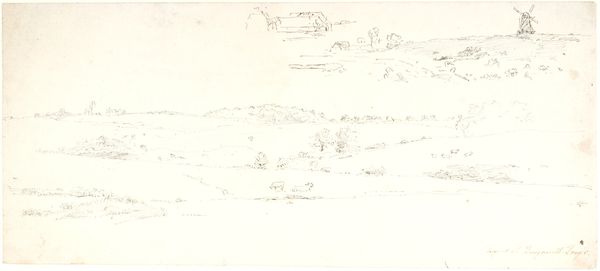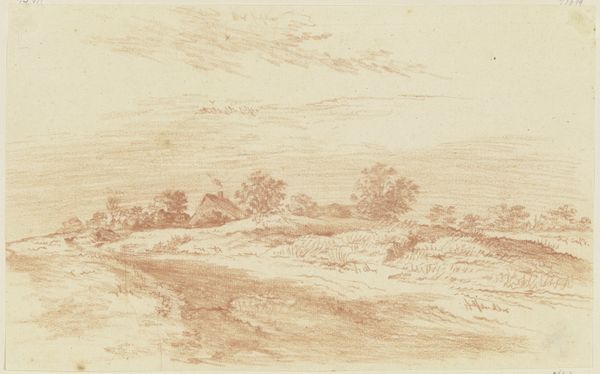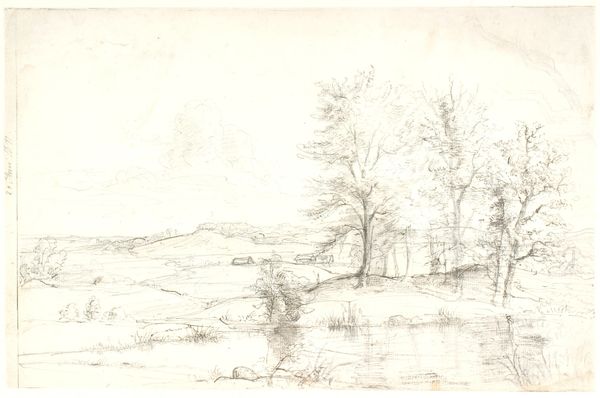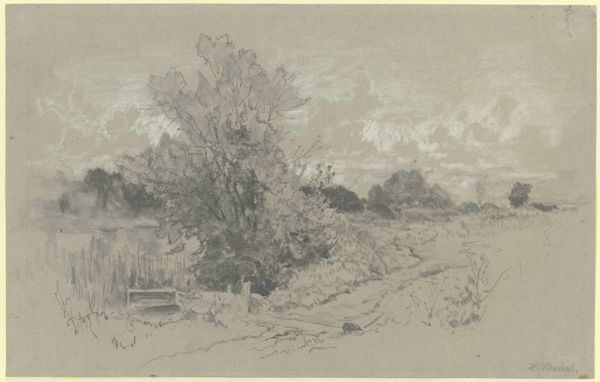
Landskab med et kær og buske, i baggrunden t.v. et hus 1840s
0:00
0:00
drawing, pencil
#
drawing
#
landscape
#
romanticism
#
pencil
#
realism
Dimensions: 109 mm (height) x 174 mm (width) (bladmaal)
Curator: Alright, let's delve into this drawing by Dankvart Dreyer from the 1840s. It's a landscape, rendered in pencil, titled "Landskab med et kær og buske, i baggrunden t.v. et hus"—which translates to "Landscape with a bog and bushes, with a house in the background to the left." Editor: Oh, my first thought? Bleak beauty. It has that fragile, fading quality like a memory half-forgotten, half-cherished. A house barely suggested behind an unforgiving meadow... It kind of hurts in a lovely way. Curator: Yes, that sensitivity is precisely what strikes me, too. Dreyer focuses intently on the play of light across the landscape. Observe how he uses delicate, almost tentative lines to capture the texture of the foliage. He manages to balance Realism and Romanticism through this rendering. Editor: Precisely, it is the liminality, the suggestion more than the solid form, that hooks me in. I'm fascinated by the lack of definition—like everything could just dissolve into mist at any moment. Are those fields empty or filled? Is the house occupied, or abandoned? It’s all softly, gorgeously ambiguous. Curator: Well, Dreyer was part of a generation of artists deeply influenced by the German Romantic landscape painters. They saw nature as a mirror of the soul and believed in the inherent spiritual value of landscape painting. His process involves drawing and working outside—very typical for that period—and it's precisely through this that this pencil drawing manages to suggest mood rather than explicit representation. Editor: You're right about seeing the soul. Looking closely, one finds such depth even within this humble pencil medium. Not a forced monumentality like some of its contemporary paintings, but a private, introspective monument to fleeting feeling, the romance of passing observation. Curator: It does manage to communicate such sincerity and intensity within a relatively simple formal configuration. I would also say this is representative of how Realism has never completely let go of its connection to Romanticism's ideals. Editor: I agree. After spending a few moments with it, it certainly reminds us of art's unique ability to transform, if only for a moment, ordinary glimpses into treasured reflections of self and place.
Comments
No comments
Be the first to comment and join the conversation on the ultimate creative platform.




